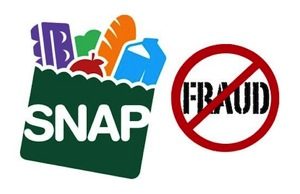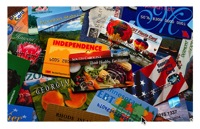02 Mar 2014 It’s Time to Limit Food Stamps to Nutritious Foods
 Fox News’ Jesse Watters recently did the nation a tremendous service by introducing us to Jason Greenslate, a Cadillac Escalade-driving musician who has used the SNAP program to purchase such premium foods as lobster.
Fox News’ Jesse Watters recently did the nation a tremendous service by introducing us to Jason Greenslate, a Cadillac Escalade-driving musician who has used the SNAP program to purchase such premium foods as lobster.
His interview can be found here.
It’s way past time that restrictions are placed on what can be purchased on the taxpayers’ dime.
Unfortunately, this kind of abuse isn’t isolated; nor is it new.
During the late 1970s and early 1980s, my mother worked for Safeway and saw a lot of abuse.
I remember that one day she was absolutely fuming because one of her customers used Food Stamps to purchase filet mignon. You might say that the food stamp program caused her to SNAP.
I should note that my mom was a single mother and our total annual household income was about $12,000 at the time. That was about 180% of the poverty threshold at the time (1980).
To add a little perspective, the Obama Administration believes that families with incomes of up to 400% of the poverty threshold are poor enough to receive subsidies to buy ObamaCare policies.
Mom usually couldn’t afford to buy steak, much less filet mignon, and yet she was forced to pay taxes so others could have that privilege.
When we had “steak,” it was most often something my mom called “poor man’s steak,” a chuck roast cut into thin slices, marinated and then broiled.
But this wasn’t the worst case she saw.
One time a customer bought fresh jumbo shrimp with food stamps.
It was bad enough that it was the most expensive shrimp available at the store (around $15 per pound, if you bought it today).
But he didn’t even plan on eating it. He told her he planned to use it as fishing bait!
I saw food stamp waste, too, while working at a convenience store.
Back then, the food stamp program didn’t use an electronic benefits transfer (EBT) card, but coupons in $1, $5, and $10 denominations. Users would receive change back in cash for any amount under $1.
One customer would buy a single piece of 2-cent candy (yes, there used to be such a thing) and then use the change to buy beer.
My manager eventually imposed a ban on such sales. She told the customers that she’d sell them an apple, a banana or some other food item, but not candy that they were clearly only purchasing for the purpose of getting the change.
Her prohibition didn’t last long. One customer filed a complaint with the state Agricultural Department, which told her to either allow customers to abuse the program in this way or our store would lose its authorization to accept food stamps.
 The problem with the program isn’t just that it allows people to buy food that most of the taxpayers can’t afford, but that in the name of providing supplemental nutrition for the nation’s poor it underwrites purchases of food with very little nutritional content, such as soda pop, candy, ho hos, and potato chips. Where’s Michelle Obama when you need her?
The problem with the program isn’t just that it allows people to buy food that most of the taxpayers can’t afford, but that in the name of providing supplemental nutrition for the nation’s poor it underwrites purchases of food with very little nutritional content, such as soda pop, candy, ho hos, and potato chips. Where’s Michelle Obama when you need her?
I have nothing against people buying such things with their own money and I don’t blame such foods for America’s expanding waistlines. Eaten in moderation, this food is perfectly fine. Twinkies don’t kill people; people kill people.
That said, this “food” has limited nutritional content and offers less value both to the families needing food and to the taxpayer footing the bill. More than $4 billion of the food stamp program is spent each year on soda pop alone, for example.
The foods that qualify for purchase through SNAP should be very limited. Let’s start by excluding everything in the snack food, cookie, and soda isles. Then eliminate most of the products in the frozen food cases.
Except for plain vegetables, fruits, and uncooked meats, most of what one finds here are snack foods or microwave-to-table foods.
This is convenience food and I don’t find it convenient to have to pay for others’ convenience.
When I was growing up, we seldom had TV dinners because our dollar went so much further by doing something quite unusual – cooking. That’s what that big square thing in your kitchen with circular things on top was designed for, believe it or not.
I’d also bar sales of premium meats, cheeses and other products through the SNAP program.
Now, I’m sure there are some people – including some self-described libertarians – who will say that my proposal would take away consumer choice or violate human dignity.
If the limited choices offered were good enough for my family using our own money, it ought to be good enough for people buying it with taxpayer money.



